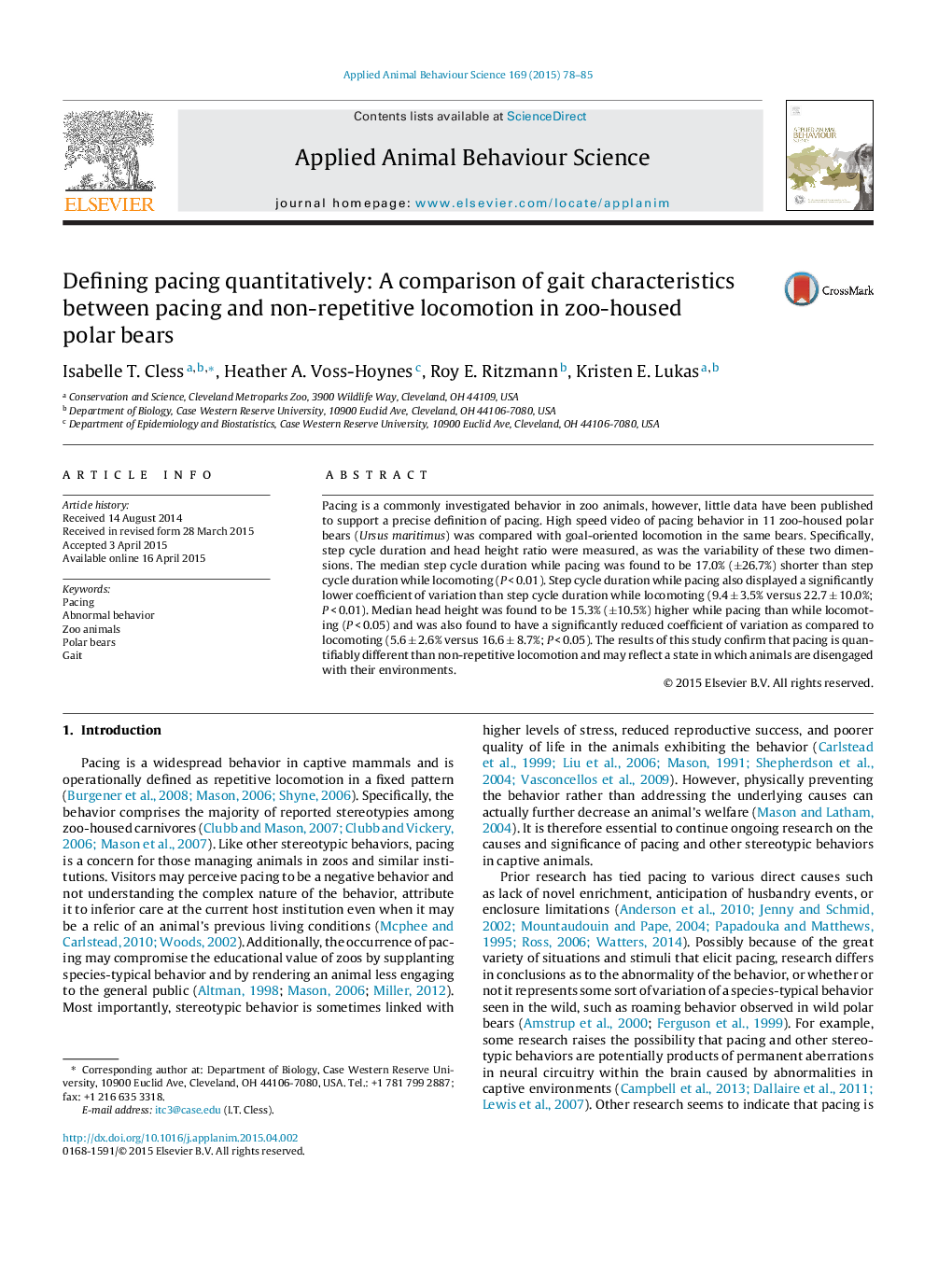| Article ID | Journal | Published Year | Pages | File Type |
|---|---|---|---|---|
| 4522471 | Applied Animal Behaviour Science | 2015 | 8 Pages |
•We use high speed video to quantify gait characteristics in polar bears.•Bears demonstrate lower variability of gait characteristics while pacing.•Step cycle length and head height differ in pacing versus locomoting.•Pacing may incorporate reduced sensory feedback and cognitive input.
Pacing is a commonly investigated behavior in zoo animals, however, little data have been published to support a precise definition of pacing. High speed video of pacing behavior in 11 zoo-housed polar bears (Ursus maritimus) was compared with goal-oriented locomotion in the same bears. Specifically, step cycle duration and head height ratio were measured, as was the variability of these two dimensions. The median step cycle duration while pacing was found to be 17.0% (±26.7%) shorter than step cycle duration while locomoting (P < 0.01). Step cycle duration while pacing also displayed a significantly lower coefficient of variation than step cycle duration while locomoting (9.4 ± 3.5% versus 22.7 ± 10.0%; P < 0.01). Median head height was found to be 15.3% (±10.5%) higher while pacing than while locomoting (P < 0.05) and was also found to have a significantly reduced coefficient of variation as compared to locomoting (5.6 ± 2.6% versus 16.6 ± 8.7%; P < 0.05). The results of this study confirm that pacing is quantifiably different than non-repetitive locomotion and may reflect a state in which animals are disengaged with their environments.
